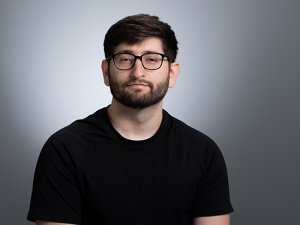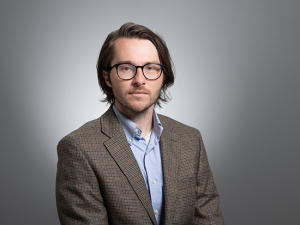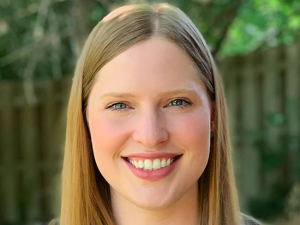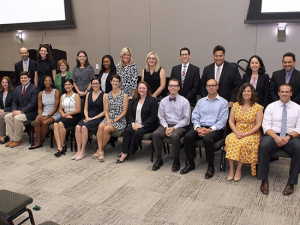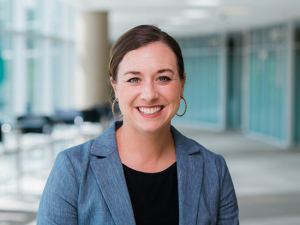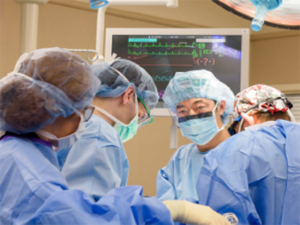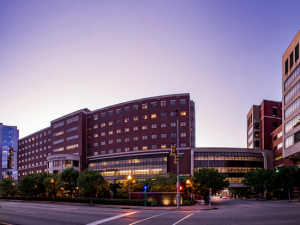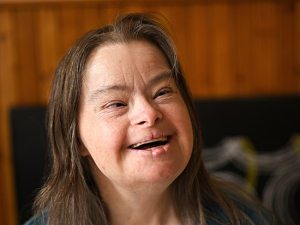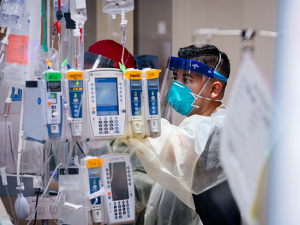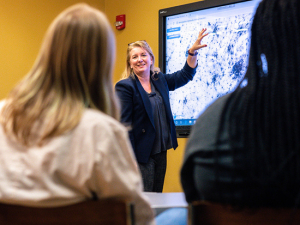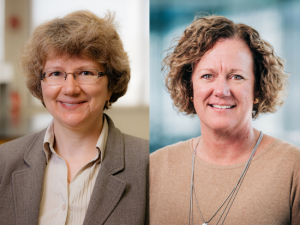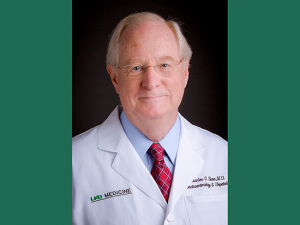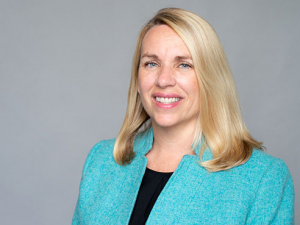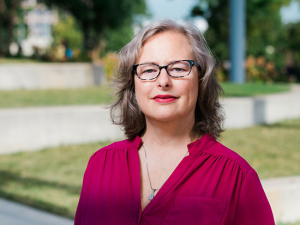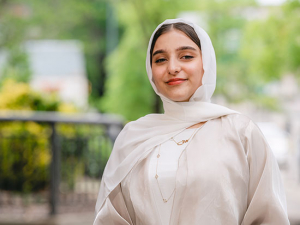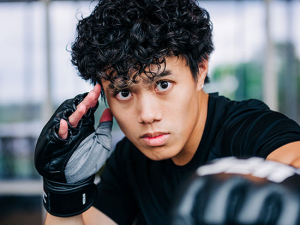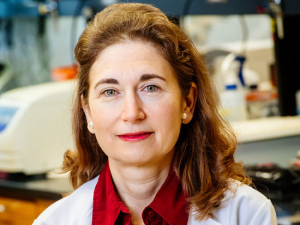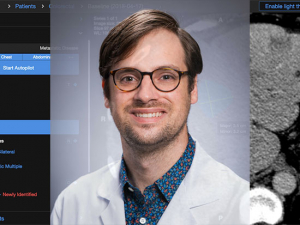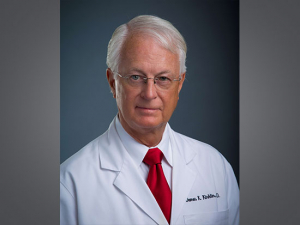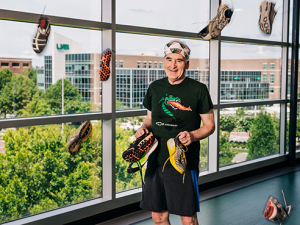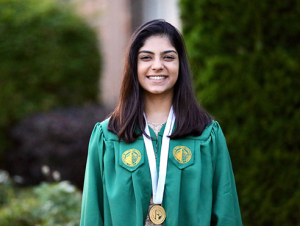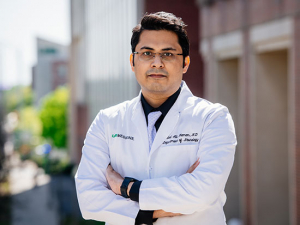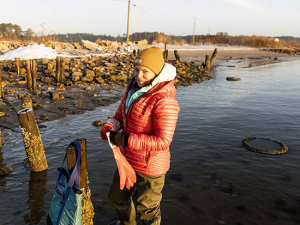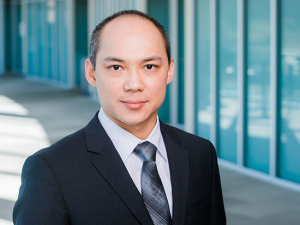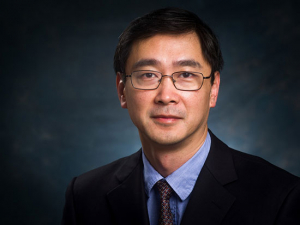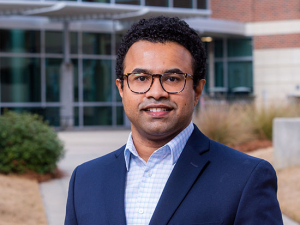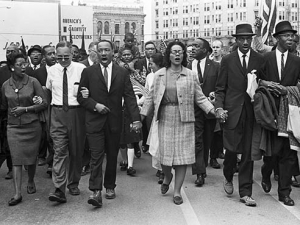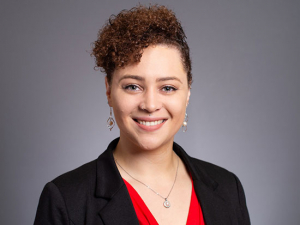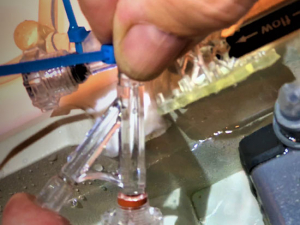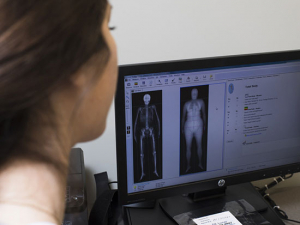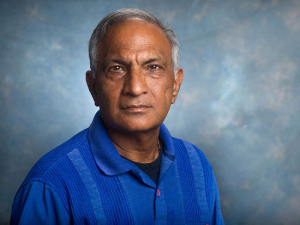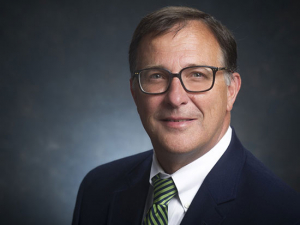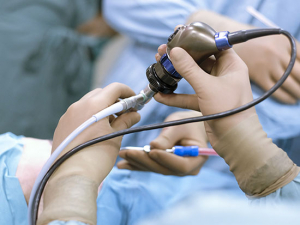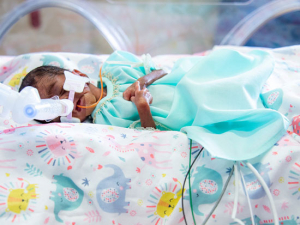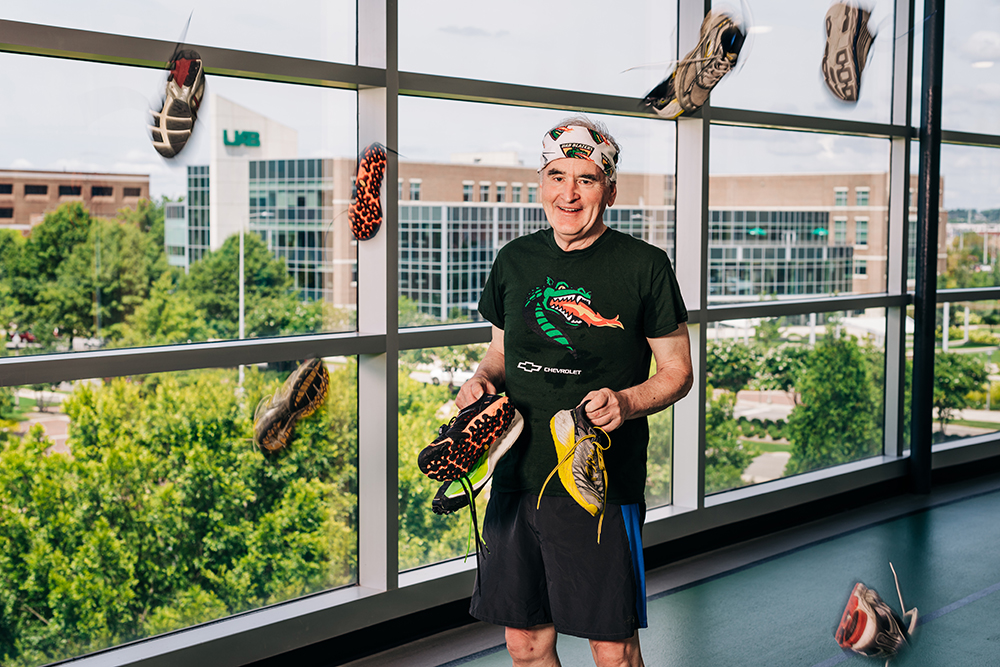
Mike Sloane, Ph.D., with the shoes that helped him cross finish lines across seven continents. ANDREA MABRY / University Relations
On June 19, 2022, Michael Sloane, Ph.D., crossed a rain-soaked finish line in Rio de Janeiro and capped a quest that began seven years before in Chicago: to run a marathon on each of the planet’s seven continents.
Unlike many of the 800-plus people who have completed that feat over the years, Sloane is not a marathon fanatic. Three Norwegian runners he met in Rio had completed exactly 1,000 marathons between them by the time they finished that race. “That strikes me as inefficient!” said Sloane, who is an associate professor in the Department of Psychology and directs the University Honors Program, a specialized program in the UAB Honors College. The seven marathons he has completed over the past 7.7 years are the only ones he has ever run.
|
“Right now, I haven’t decided whether I will do more marathons,” Sloane said. “If I do, I hope to combine them with travel to some interesting destinations around the world, but you probably won’t see me in some of the brutal ones like the Mount Everest Base Camp or the Great Wall of China marathons.” |
Growing up in Ireland, Sloane was “a serious athlete,” he said. He played Gaelic football in grade school, rugby in high school and soccer in an industrial league in Germany during his college summers, where he worked to earn enough money to put himself through University College Dublin. As a graduate student in the Cresap Neuroscience Lab at Northwestern University, he played club-level rugby in the Big 10 Conference. But after he arrived at UAB for his first faculty position in 1982 as a 25-year-old, “I didn’t participate in any serious sports or exercise regimen other than a Sunday adult soccer league on a team that didn’t practice during the week,” Sloane said.
Then, in 2013, came what Sloane called a “kick in the head”: a call from his doctor, Patricia Garver, M.D., with a diabetes diagnosis. Sloane’s story — from 30 years of inactivity to a globe-trotting endurance adventure — offers inspiration in the midst of the Summer of Wellness initiative from UAB Employee Wellness. Read on to find out more about Sloane’s quest, including his favorite marathon. Garver, an internist and assistant professor in the Department of Medicine who retired from UAB last year, also adds her thoughts on how people with diabetes can take control of the disease — even if they don’t take up marathoning.
Then why not resolve to take up a healthy challenge of your own? Find free programs, tools, events and challenges from Employee Wellness here.
Story continues below image.
Q: Have you always been a runner? When did you take up marathoning?
Sloane: I came to road running very late. In spring 2013 I got a call from Dr. Garver telling me I had type 2 diabetes. I was overweight, eating all the wrong things and not doing any exercising at the time (or for the previous 30 years!).
|
Sloane is the faculty sponsor for the student organization Running Club at UAB. |
Upon my diabetes diagnosis, a real kick in the head, I attended some excellent educational seminars about nutrition, diet and exercise and all that goes into behavioral management of diabetes. The emphases were on paying attention to ingredient labels, types of foods and drinks to avoid and to consume, exercise, blood sugar monitoring and general behavioral measures that contribute to reducing A1C levels.
I started to be a lot more careful about what and how much I ate and started some walking and running in the Campus Recreation Center. Within a few months I was weaned off metformin and my A1C [a measure of blood sugar] gradually came down.
My first 5K [a five-kilometer/3.1-mile race] was UAB’s Alumni 5K in 2013, the noble goals for which were to: not die, finish the race, complete it under 40 minutes and not have to walk any part of the course, in that order of priority. Check! Check! Check! And check! I have participated in every Alumni Scholarship race, mostly the 10K, since, even the recent virtual ones.
I gradually built up my endurance and put my name in the lottery for the Chicago Marathon, one of the World Majors. Luckily, I got a spot and joined 45,000 other runners for this iconic race through Chicago’s ethnic neighborhoods.
|
“Some of my students are aware that I run, as I do a lot of training in the Campus Recreation Center, so I see quite a few of them there,” he said. “I guess that is useful, in a non-preachy way, in serving as a role model for having an active lifestyle.” But Sloane never told his students about his marathon plan. “Very few people knew that I had that in mind,” he said. “I didn’t need that extra pressure in case I couldn’t pull it off.” |
Q: At what point did you decide to go for all seven continents?
Sloane: Finishing the Chicago Marathon, though causing much pain and exhaustion at the time, empowered me to think about another marathon. I had always wanted to travel to Iceland, so I ran the Reykjavik Islandsbanka Marathon on August 20, 2016. After that, I successfully applied for the Birmingham Track Club’s Japan program with Birmingham’s sister city, Maebashi, and completed that marathon with three Birmingham colleagues on April 23, 2017. Somewhere along the way, I became aware of the Seven Continents Club, and I started thinking about the idea of doing a marathon on all seven continents.
Q: Antarctica would seem like the most difficult challenge. How did you do that?
Sloane: Needless to say, the elephant in the room was Antarctica! I figured that if I could finish a marathon in Antarctica, I would then be able to finish races on the remaining continents. I had seen some spectacular photographs and had heard riveting accounts of Antarctica from my faculty colleague, Jim McClintock in UAB’s biology department, who, along with Chuck and Maggie Amsler, has visited annually for many years to conduct NSF-sponsored research at the Palmer and McMurdo research stations. After some internet searching, I came across Marathon Tours & Travel, which created the Antarctica marathon and half-marathon in 1995, enabling runners for the first time to complete a marathon on all seven continents, and they created the Seven Continents Club to recognize runners who had achieved that feat.
Back in 2017, there was a two- or three-year waiting list. In December 2018, and again in January and February of 2019, I had the opportunity to do some training in Chicago along the lakefront in subzero and windy conditions. That’ll get you ready for anything.
Q: Which of the marathons has been your favorite, and why?
|
The course traveled between Chinese and Uruguayan research stations on the island. |
Sloane: The Antarctica trip was phenomenal, with the marathon itself becoming almost secondary to the whole experience. The group met up in Buenos Aires for a few days before flying to Ushuaia in Tierra del Fuego to board one of the two expedition vessels. After two days crossing the Beagle Channel and Drake Passage, the Akademik Ioffe and the Akademik Vavilov arrived at the South Shetland islands of Antarctica. We had multiple opportunities to hop in Zodiacs and explore the Shetland Islands and Antarctica Peninsula. Marathoners on the Vavilov had tough blizzard conditions for their race on March 17, but runners on my Ioffe vessel had better conditions on March 18. (By treaty rules, there can’t be more than 100 people on shore at a time.) The weather on my race day was actually much milder than my Chicago training days, as the temperature was just at freezing at the starting line, and we didn’t encounter any blizzard conditions as we completed four loops between different research stations on King George Island.
|
Sloane doesn’t get much sightseeing done during his marathons, either. He doesn’t listen to music or podcasts, either in races or training. “Just me, immersed in the immediate surroundings with my fellow runners and my thoughts for the next kilometer.” |
Q: Did you do any sightseeing before or after your marathons, or were you there just to race?
Sloane: I do target races in interesting locations and try to arrive a few days before the race. I’m not in condition to do much exploring after! Obviously, the trip to Antarctica was an extended one, but I haven’t taken maximum advantage of extended trips either side of the race with other marathons. For example, my trip to Brisbane was a quick there and back, arriving Friday morning and leaving Sunday night. I did get some sightseeing in on Friday and Saturday.
Q: How did you decide where to run?
Sloane: Decent temperatures, flat courses, work schedule and interesting destinations have guided my choices. I ran the Sunshine Coast Marathon in Mooloolaba, north of Brisbane, Australia, on August 4, 2019, the same year I ran in Antarctica. I was lucky to have completed the Carthage International Marathon in Carthage, Tunisia, for my African continent category on February 23, 2020, before COVID disrupted life as we knew it.
|
Sloane’s pre-race breakfast for his marathons: oatmeal and a muffin. “Probably sacrilegious for experienced runners, but it works for me,” he said. |
(Sloane was scheduled to run a marathon on Chile’s Easter Island in June 2020 to finish his final continent, but that edition, and the 2021 marathon, were canceled. The race was reinstated for June 2022, but the only airline with passenger service to Easter Island did not resume flights until July.)
That left me with a few months of training possibly going to waste, as had happened in 2021, and so I looked around for alternative races in South America. I saw that Rio de Janeiro was set for June 19 and Marathon Tours was offering a package, so I jumped on that.
Q: What’s your typical training routine? Do you run with other UAB faculty, staff or students?
|
For the Rio marathon, Sloane woke up at 3 a.m. for a 4 a.m. bus ride to the starting line. |
Sloane: I actually train alone, though most runners train with others. There are some great runners among UAB faculty and staff, most of whom are way more talented and serious than me.
I have a training schedule that I start to use about five or six months out from race day. There are lots of marathon training schedules out there for runners of different levels. They all involve building up the mileage for a weekend long run and two or three weekday runs. The schedule I use builds up to a long run of 20 miles before a two-week taper before race day. I figure if I get to 20 miles on race day, I can finish the last 6.2 miles on fumes.

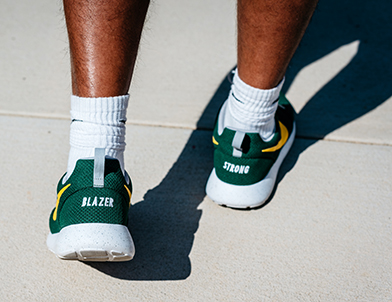 You are in control!
You are in control! 